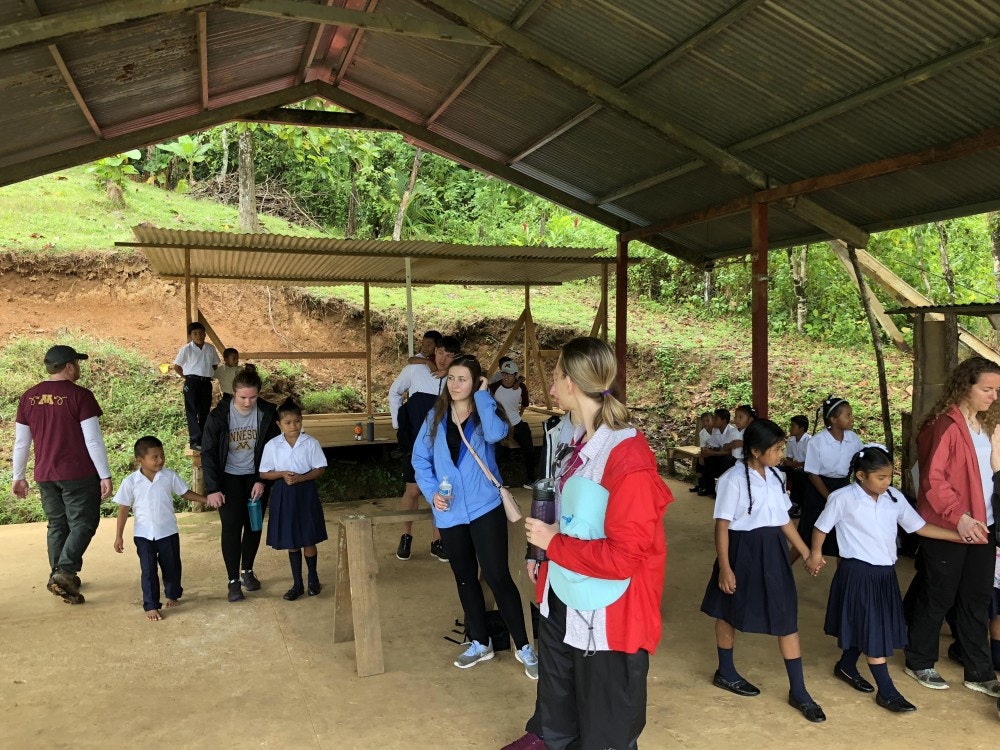A group of University of Minnesota students recently traveled to Panama to address the global issue of water security — by focusing on it at the local level.
Members of the University global seminar, “Chemistry in the Field: Water Analysis and Environmental Impact,” traveled to Panama during spring break to run chemical analyses on local water sources. The students will use tests from the communities they visited to create theoretical solutions throughout the rest of the semester.
In the first ever trip to Panama by the University’s Department of Chemistry, 12 chemistry students and two professors spent the week in the province of Bocas del Toro.
“It became really clear that water is one of the main issues … that part of country is experiencing, … there is a lot of issues related to health with water and water management,” said chemistry professor and trip leader Edgar Arriaga. “Chemists could contribute to understanding the water situation or water security.”
Preliminary results from on-site water samples show potential in efforts already underway by a local organization. Chemistry professor and trip leader Kyle Bantz said actions such as adding a covering to a reservoir can help prevent bacteriological contamination.
“Overall, one of the biggest surprises was the bacteriological contamination that we anticipated on finding was not as high as we anticipated,” said Arriaga.

Further testing will be conducted at the University to verify the degree of contamination. Full data analyses from the samples will look at the water’s contamination, pH level, cloudiness and conductivity.
Larger ecological factors impacted the data collected on the trip. A drought that started in the region in late November ended around two weeks before the group arrived. The team took samples from a reservoir that had previously dried up and a desalinated water tank that supported the community during the drought.
“They are very reliant on rainwater … that’s sort of how communities have had their system set up for a while,” said Joel Segal, a chemistry student who was on the trip. “Climate change … has impacted [the communities] because they’re not used to droughts for extended periods of time like they had just experienced in the late winter months.”
Arriaga said he was surprised by varying cultural customs that impact the communities preferences for their water sources. He said people in the U.S. will generally get their water from a single source, but the Panamanian communities rely on rainwater, wells or “ojo de agua” — springs fed by rainwater.
“There were people that … prefer the taste of rainwater over the well or they prefer the spring,” Bantz said. “Some of them thought the well water was dirty because it came from the ground, … it’s really interesting the different perspectives the people have about their water sources.”
The class will create proposals based off their findings that will be used to set priorities and partner with organizations already working in these regions, Arriaga said. These may include comparing bacterial contamination results to reports of gastrointestinal and parasite issues in the region.
“For the proposals … a lot of them are basically going to deal with how to respectfully identify a measure that could be taken within these communities,” said Segal. “Because they’re very independent, it’s a very complicated relationship between the Panamanian government and these indigenous tribal communities.”
